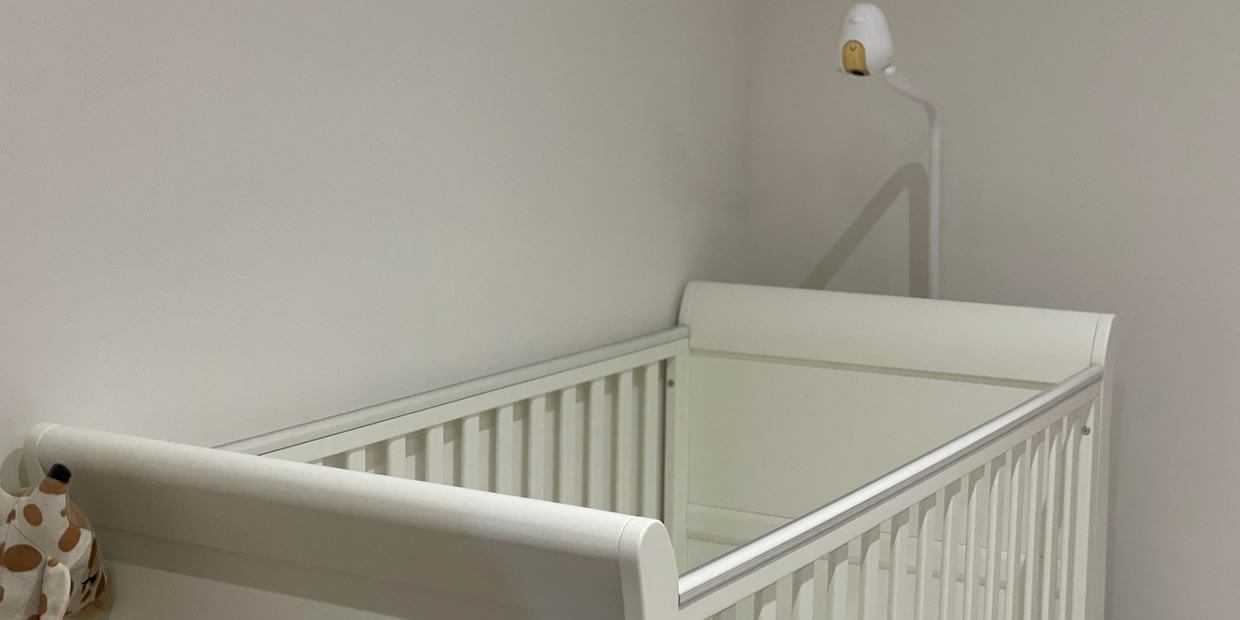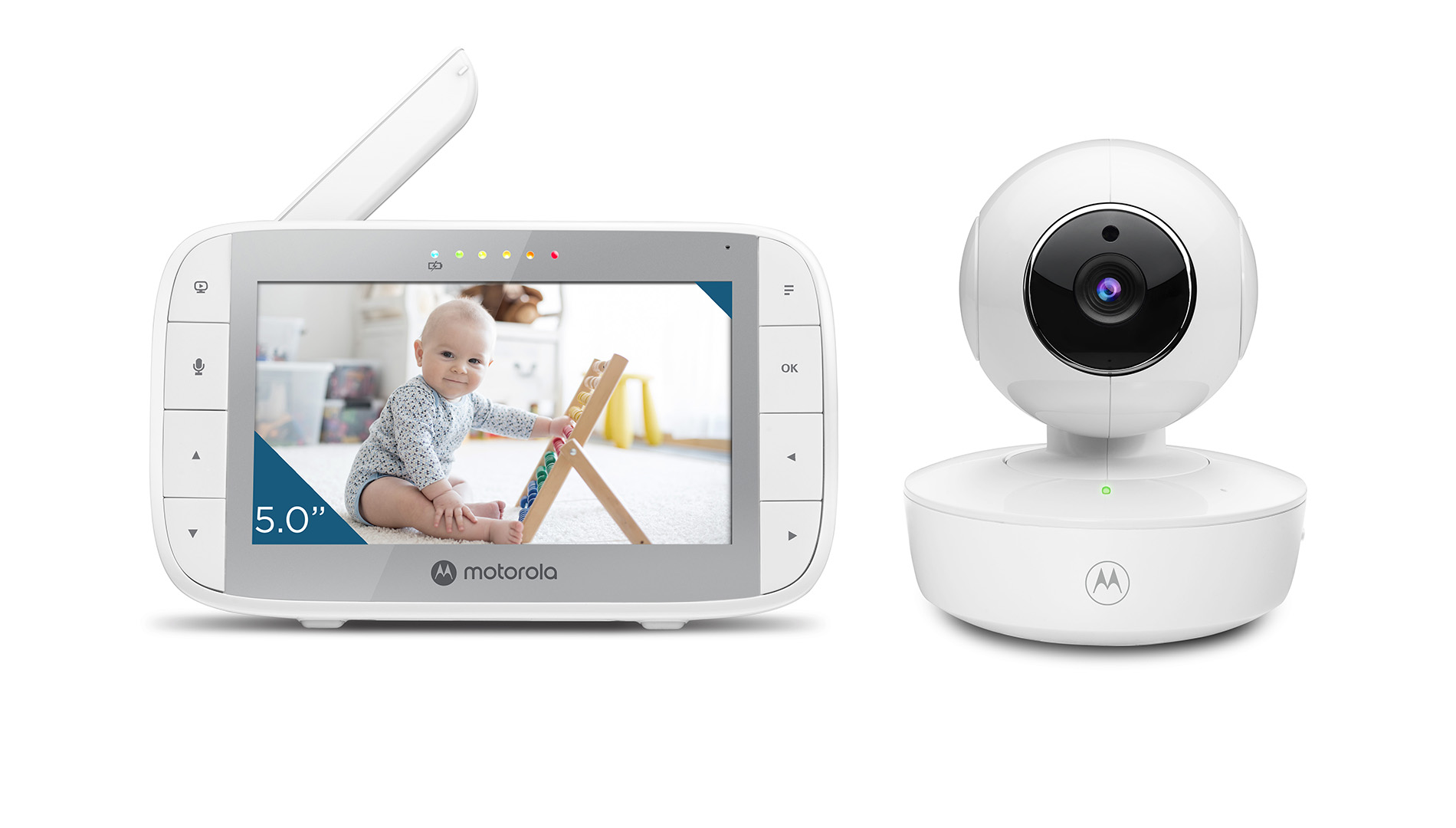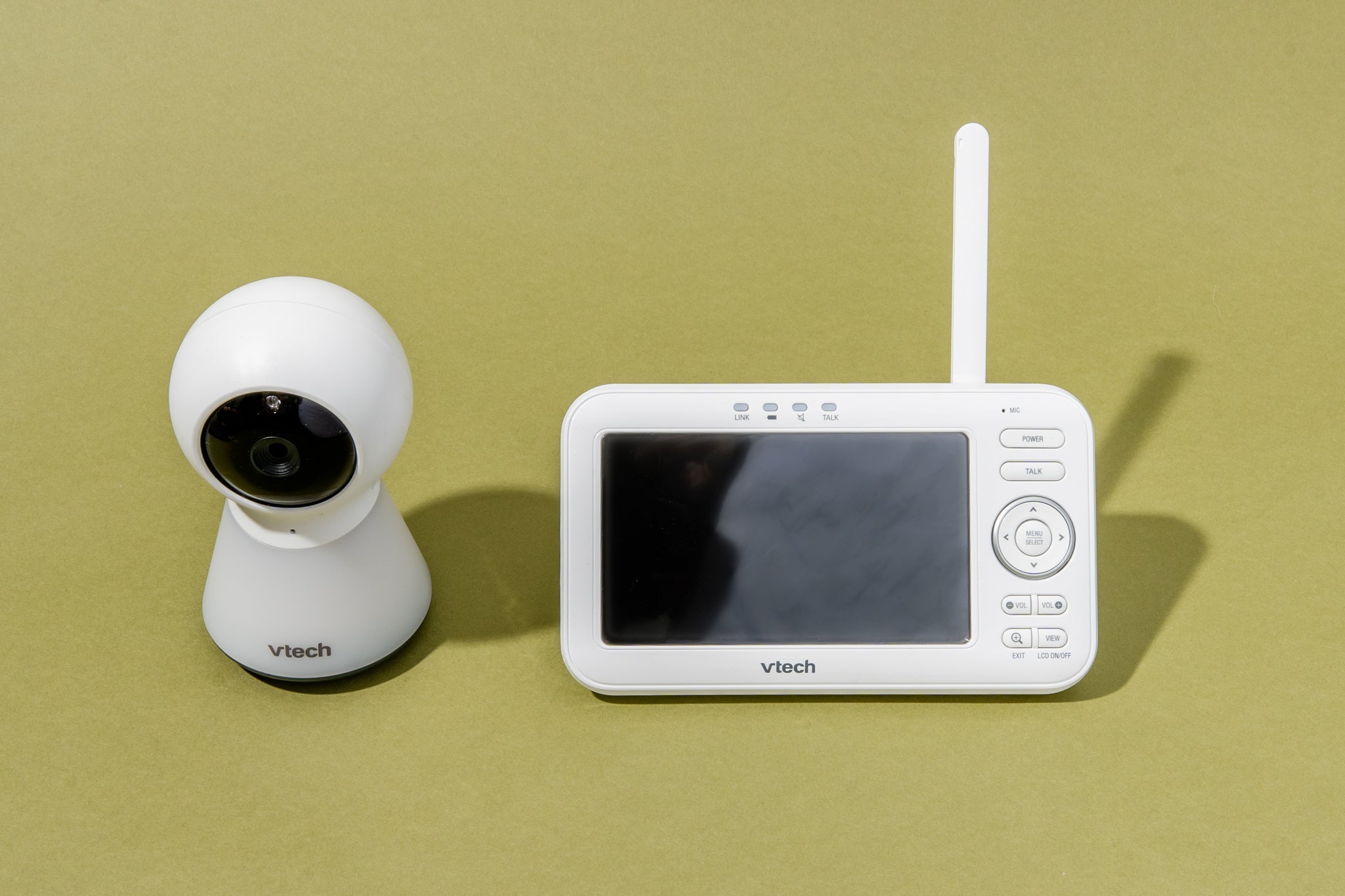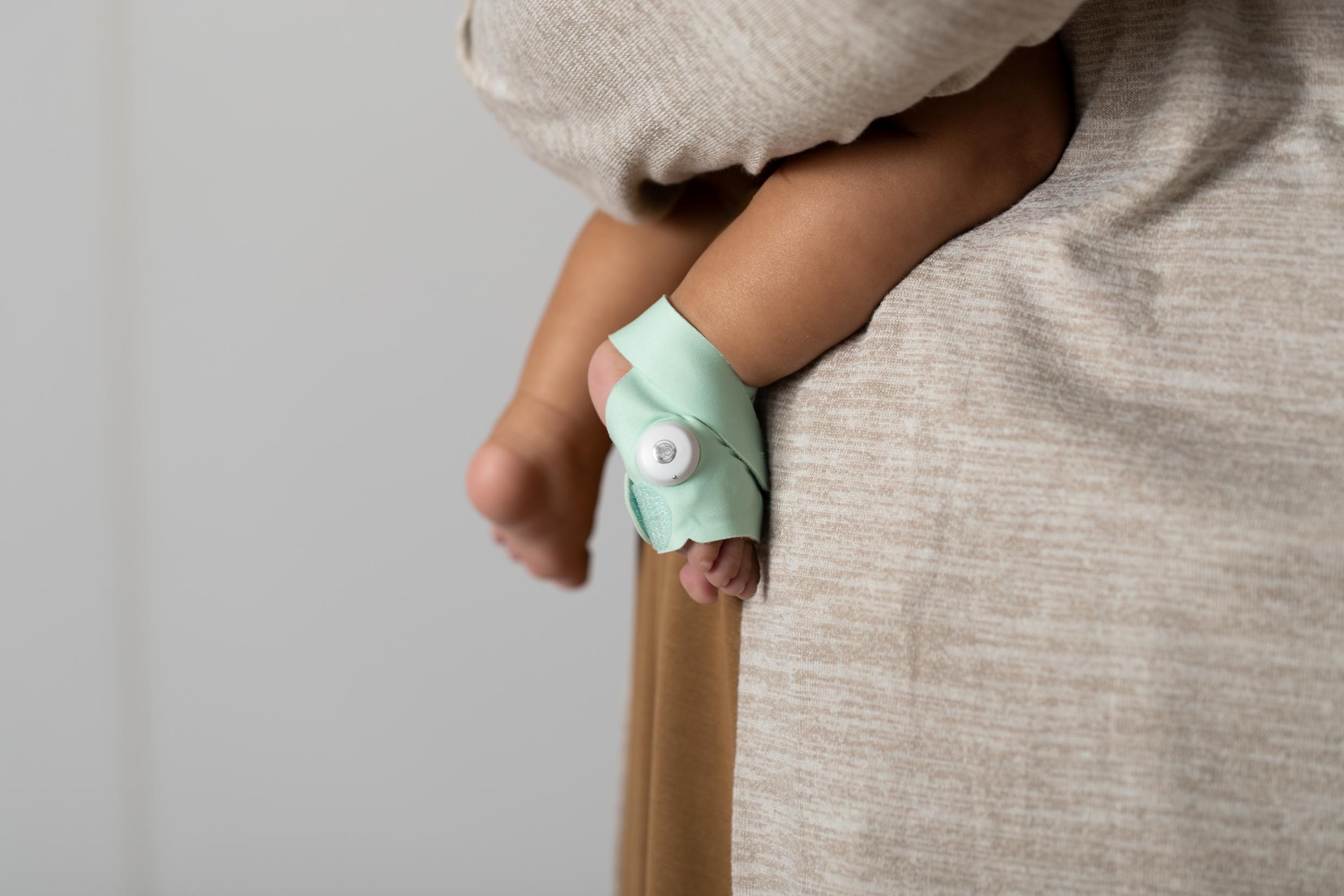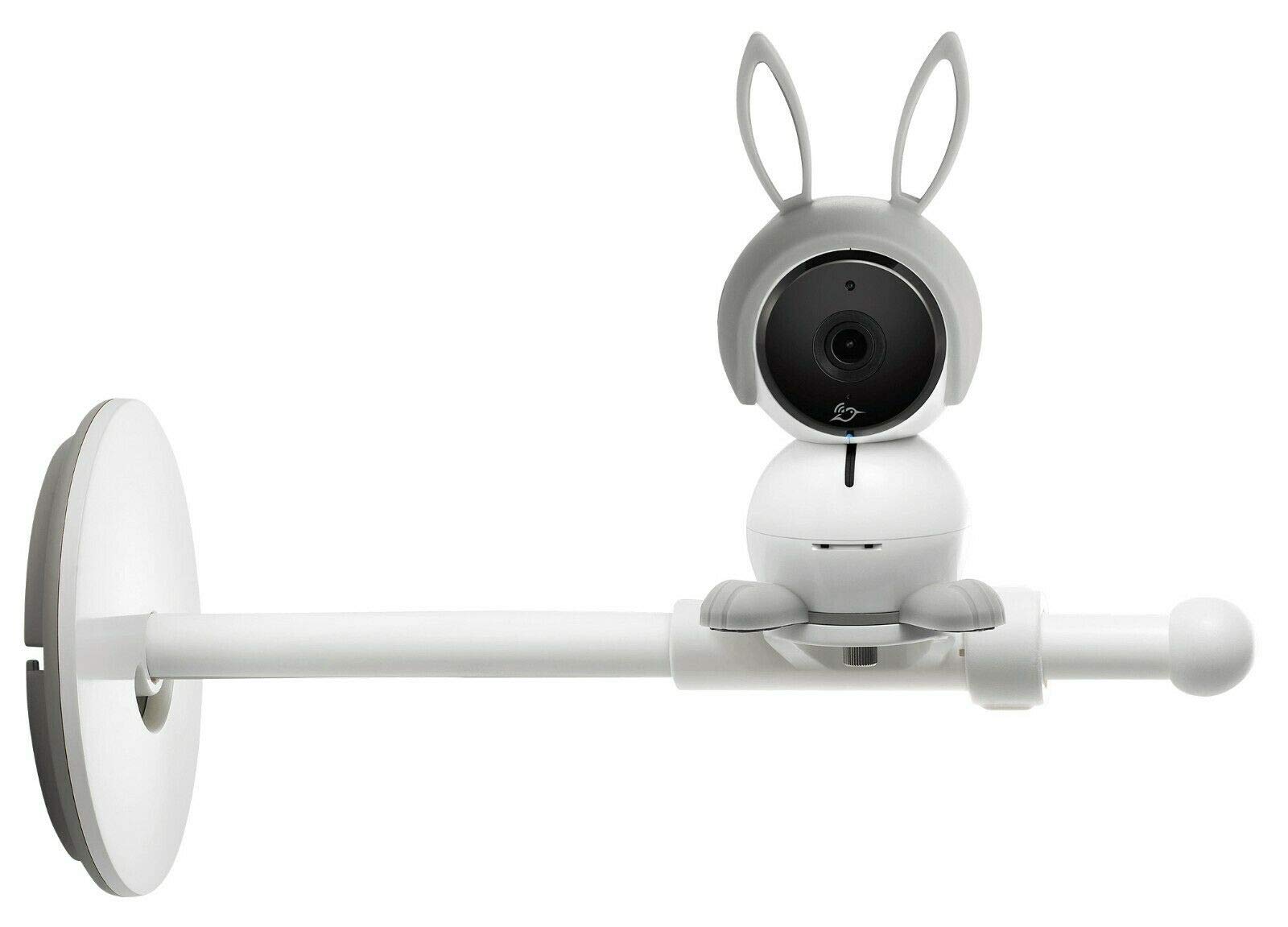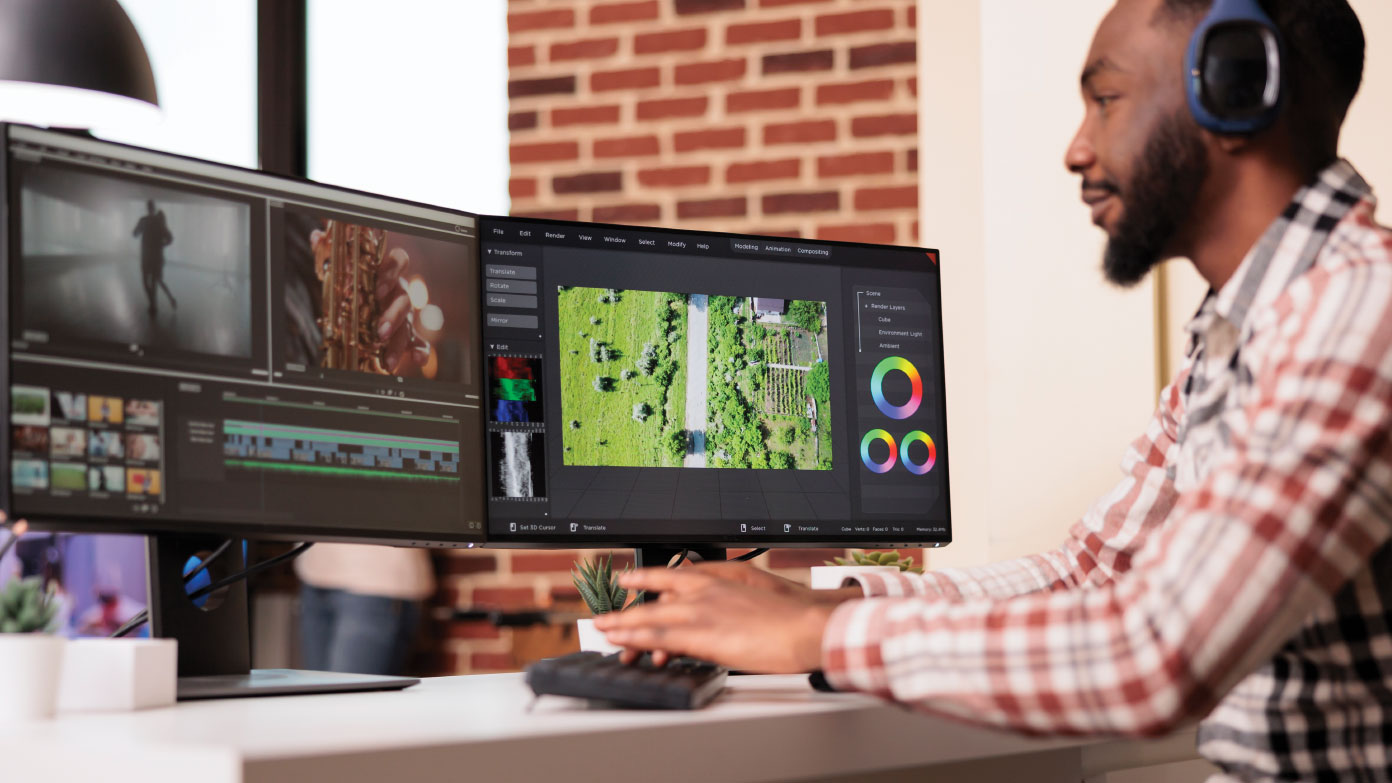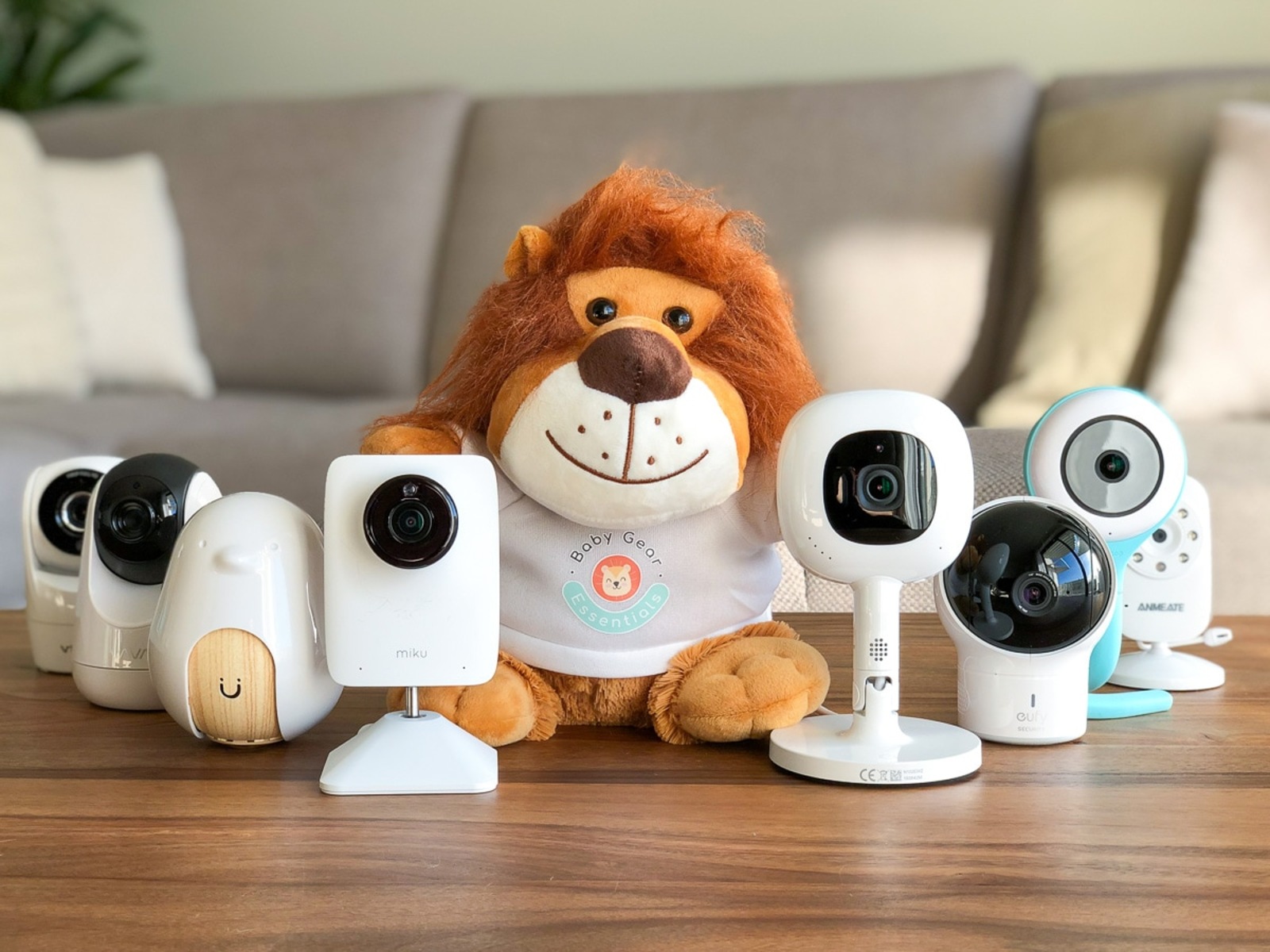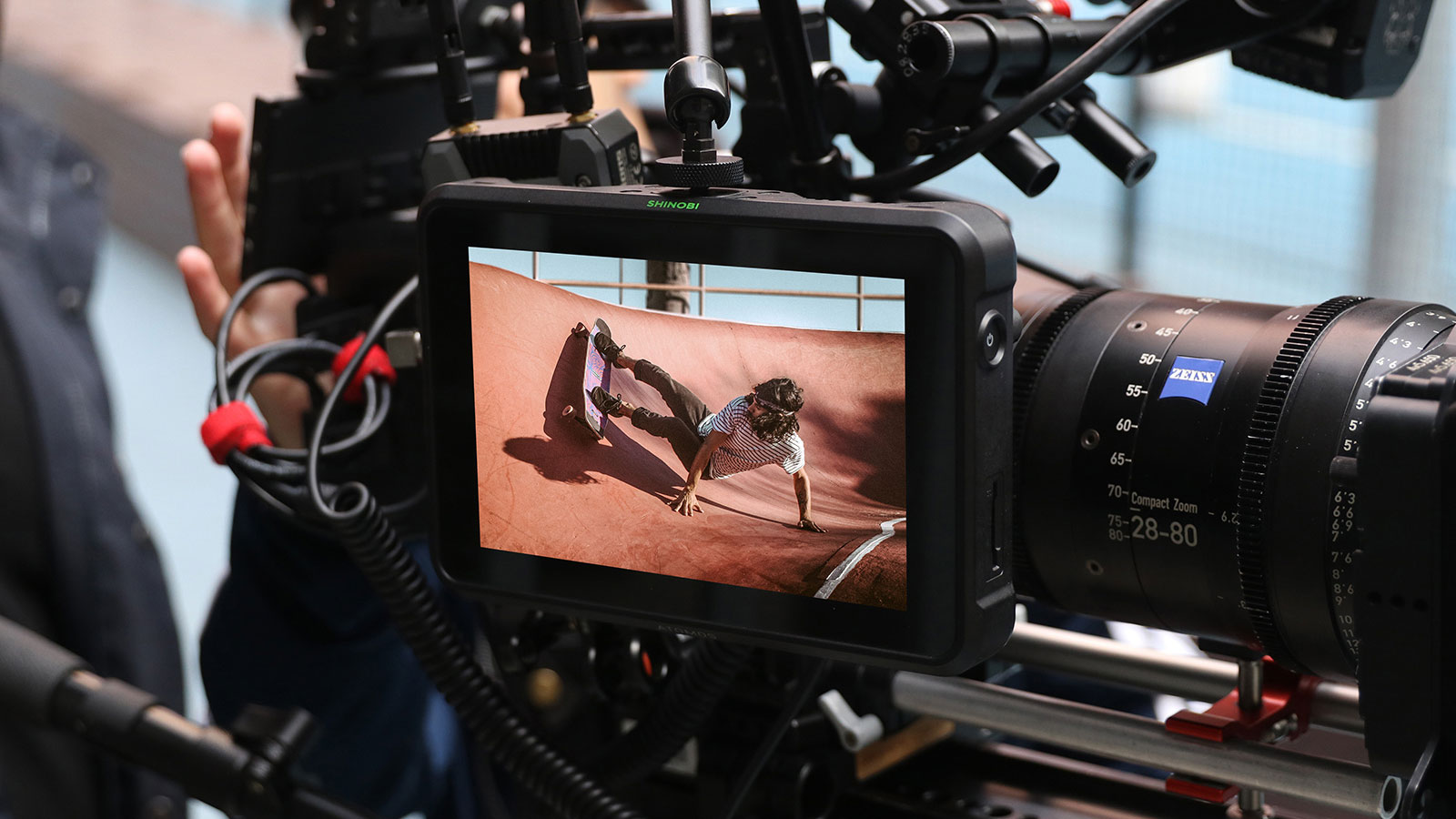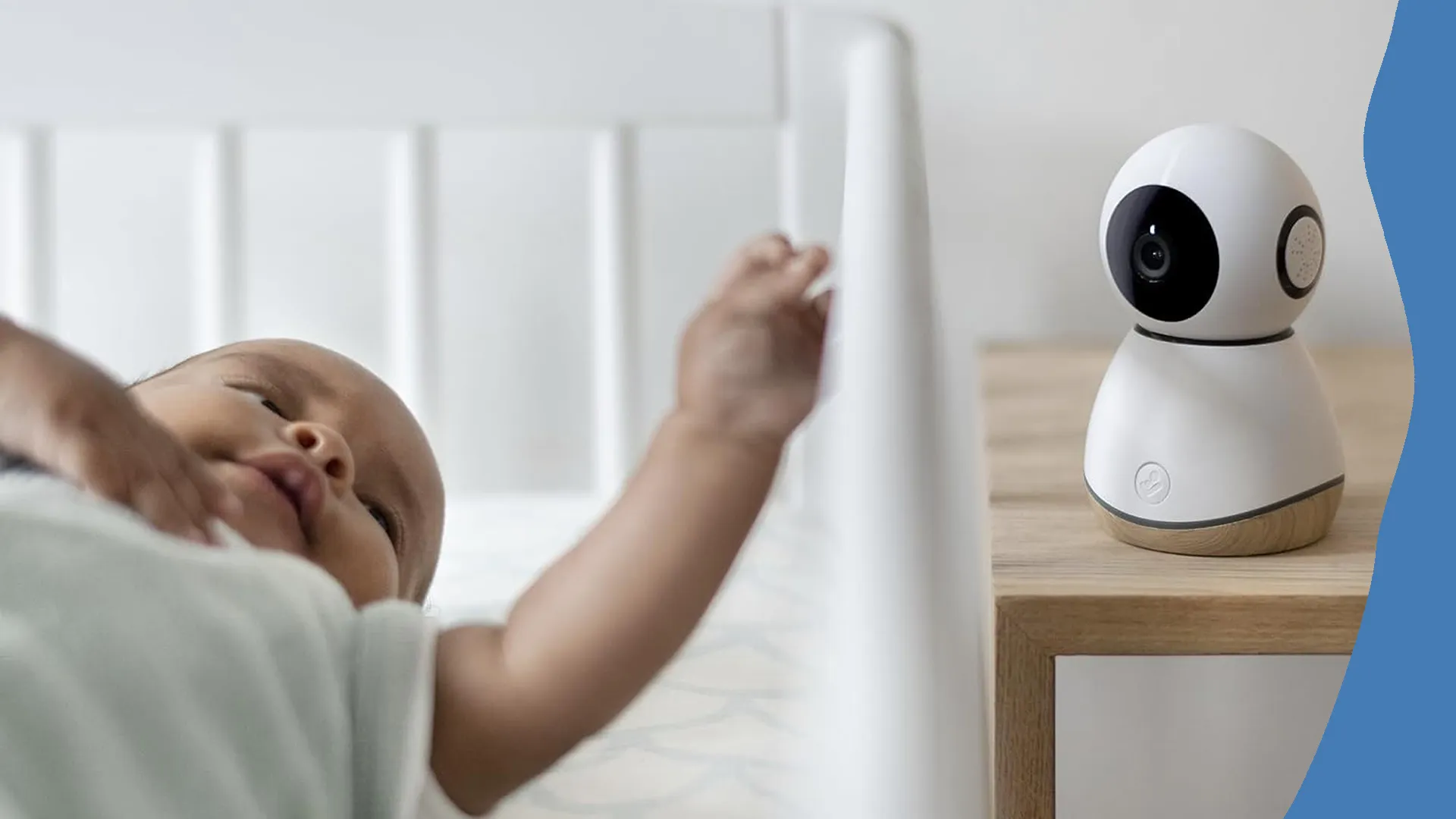Introduction
Welcome to our guide on where to mount a baby monitor. If you’re a parent or caregiver, ensuring the safety and well-being of your little one is undoubtedly your top priority. A baby monitor is an invaluable tool that allows you to keep an eye on your baby remotely, providing you with peace of mind.
However, knowing where to mount the baby monitor can be a bit daunting. You want to find the perfect spot that allows you to have a clear view of your baby while also considering safety and convenience. In this guide, we will explore the importance of baby monitor placement and provide you with popular mounting options to help you make an informed decision.
Properly positioning the baby monitor is crucial for optimizing its functionality. The location can affect the quality of the video and audio feed, as well as your ability to monitor your baby effectively. By strategically placing the baby monitor, you can ensure that it provides a clear view of your little one throughout the day and night.
Before we dive into the specifics of where to mount a baby monitor, it’s important to consider a few factors. The size and layout of your baby’s room, the type of baby monitor you have, and your personal preferences will all influence your decision. Taking these factors into account will help you determine the most suitable mounting option that fits your needs.
In the following sections, we will explore popular mounting options for baby monitors, discuss safety considerations, and provide tips for properly mounting your baby monitor. By the end of this guide, you’ll have a clearer understanding of where to mount your baby monitor and how to optimize its performance for your peace of mind.
Importance of Baby Monitor Placement
Choosing the right spot to mount your baby monitor is essential for several reasons. Firstly, it allows you to have a clear view of your baby’s activities, ensuring their safety and well-being at all times. Secondly, proper placement ensures that the monitor captures high-quality video and audio, providing you with accurate information about your baby’s sleep patterns, movements, and possible distress.
By strategically placing the baby monitor, you can have peace of mind knowing that you’ll be alerted promptly if your baby needs attention. Whether you’re in a different room, taking care of household chores, or resting in another part of the house, having a properly positioned baby monitor allows you to monitor your baby’s activities without constant physical presence.
When deciding where to mount your baby monitor, consider placing it in an area that provides a wide view of your baby’s crib or play area. This will allow you to observe their movements, gestures, and overall well-being. Additionally, placing the monitor strategically can help you detect potential hazards or discomfort that your baby may experience.
Baby monitor placement also plays a significant role in optimizing the performance of your monitor. By ensuring that there are minimal obstructions between the camera and your baby, you can obtain a clear, uninterrupted video feed. Avoid placing the monitor near objects or furniture that may block the camera’s view or create interference.
Furthermore, proper placement of the baby monitor can help eliminate false alarms. Mounting the monitor in a location that minimizes background noise and avoids picking up unrelated sounds can greatly reduce unnecessary alerts, allowing you to differentiate between genuine alarms and environmental noise.
Remember, the purpose of a baby monitor is to enhance your ability to care for your child efficiently and ensure their safety. Choosing the right location to mount your monitor maximizes its effectiveness and allows you to have constant visual and audio access to your baby.
Factors to Consider Before Mounting a Baby Monitor
Before you proceed with mounting your baby monitor, it’s important to take several factors into consideration. These factors will help you determine the most suitable mounting option and ensure optimal functionality and safety. Here are a few key factors to keep in mind:
- Room Layout: Consider the size and layout of your baby’s room. Take note of any obstacles, such as furniture or décor that could obstruct the monitor’s view or create potential safety hazards. A clear line of sight from the camera to your baby’s crib is essential.
- Range and Signal Strength: Understand the range and signal strength of your baby monitor. Some monitors may have a limited range, while others can cover larger distances. This will determine the maximum distance between the camera and the monitor unit.
- Power Source: Identify the proximity of power outlets to the desired mounting location. Ensure that there is a nearby outlet available to power the baby monitor’s camera unit. If necessary, consider using extension cords or opting for wireless battery-powered monitors.
- Mounting Surface: Assess the type of surface you plan to mount the monitor on. Different mounting options may require specific surfaces, such as walls, shelves, cribs, or furniture. Ensure that the surface is sturdy and capable of securely holding the monitor.
- Visibility and Accessibility: Consider the visibility and accessibility of the monitor unit. Mount it in a location that allows you to easily view the video feed without obstruction or requiring you to constantly adjust your position. Accessibility is also important for adjustments and maintenance.
By considering these factors, you can make an informed decision about where to mount your baby monitor. Taking the time to assess your specific needs and the layout of the room will help ensure that you choose the most suitable mounting option for your monitor, providing you with a clear view of your baby and peace of mind.
Popular Mounting Options for Baby Monitors
When it comes to mounting a baby monitor, there are several popular options to consider. Each option offers its own advantages and considerations, and choosing the right one depends on your specific needs and the layout of your baby’s room. Let’s explore some popular mounting options:
- Wall Mount Option: Mounting the baby monitor on the wall provides a secure and elevated position. It allows for a wide view of the room and keeps the monitor out of reach of curious hands. Ensure that the wall mount is properly installed and that the camera is securely attached.
- Shelf Mount Option: Placing the baby monitor on a shelf or ledge provides flexibility in adjusting the monitor’s position and angle. It requires a stable and appropriately sized shelf that is within the camera’s range. Ensure that the shelf is not too high or low, and away from any hazards.
- Crib Mount Option: Some baby monitors offer crib attachment options, allowing you to mount the camera directly on the crib. This option provides a close-up view of your baby and ensures that the camera follows their movements. Ensure that the mount does not pose a safety risk and does not obstruct your baby’s movement.
- Ceiling Mount Option: Mounting the monitor on the ceiling provides a unique perspective and allows for a wide-angle view of the room. This option can be particularly useful if you have a larger nursery or want to monitor multiple areas. However, ensure that the camera is securely mounted and does not hang too low.
- Furniture Mount Option: If wall or shelf mounting is not suitable, you can opt to mount the baby monitor on a nearby piece of furniture, such as a dresser or nightstand. This option provides flexibility in positioning and can blend seamlessly with the room’s decor. Ensure that the furniture is stable and the camera is securely attached.
When considering these mounting options, it is essential to prioritize the safety and comfort of your baby. Ensure that the chosen option does not pose any hazards or risk of falling. Take into account the specific features and compatibility of your baby monitor with each mounting option to ensure proper fit and functionality.
By selecting the right mounting option for your baby monitor, you can ensure optimal placement and improve your monitoring experience. Consider the convenience, visibility, and safety aspects of each option to determine which one best suits your needs.
Wall Mount Option
The wall mount option is one of the most popular choices for mounting a baby monitor. It offers a secure and elevated position, providing an excellent vantage point for monitoring your baby. By mounting the monitor on the wall, you can ensure a wide view of the room while keeping it out of reach from curious hands.
When opting for the wall mount option, it’s important to select a suitable location on the wall that provides an optimal view of your baby’s crib or play area. Consider placing the monitor at a height that allows you to see the entire crib without any obstructions. Additionally, ensure that the wall mount is properly installed and can support the weight of the camera unit.
Some wall mounts come with adjustable brackets or arms, allowing you to easily adjust the position and angle of the camera. This flexibility is especially helpful if you want to change the monitoring angle or if your baby’s needs change as they grow. It’s essential to secure the camera firmly to the mount to prevent it from accidentally falling.
One advantage of the wall mount option is that it keeps the monitor cables neatly tucked away and out of reach. This reduces the risk of your baby pulling on the cables or accidentally knocking the monitor down. If the wall mount allows for cable management, take advantage of it to maintain a clean and organized appearance.
Before installing the wall mount, consider the layout of the room and the proximity of power outlets. Ensure that there is an outlet nearby, or plan for appropriate cable routing to reach the power source. It’s also important to consider the visibility of the monitor’s display from different angles in the room, ensuring that it can be easily viewed.
Remember, when opting for the wall mount option, it’s crucial to follow the manufacturer’s instructions for installation. Make sure the wall mount is securely attached to the wall using appropriate screws or anchors. Regularly check the stability of the mount and ensure that it remains secure over time.
The wall mount option provides a stable, elevated, and secure position for your baby monitor. By choosing this option, you can have a clear view of your baby’s activities while ensuring their safety. Take the time to assess the room layout and properly install the wall mount to maximize the benefits of this popular mounting option.
Shelf Mount Option
The shelf mount option offers flexibility and convenience for mounting your baby monitor. This option involves placing the monitor on a stable and appropriately sized shelf or ledge within your baby’s room. It allows you to easily adjust the position and angle of the monitor to ensure a clear view of your little one.
When selecting a shelf for mounting the baby monitor, choose one that is within the monitor’s range and provides a suitable height for optimal visibility. Consider the distance between the shelf and your baby’s crib, ensuring that the camera can capture a wide view of the crib without obstruction.
One advantage of the shelf mount option is the ability to reposition the monitor as needed. This can be particularly useful if you want to monitor different areas of the room or if your baby’s crib is adjustable. Adjusting the position and angle of the monitor can help you maintain a clear view as your baby grows and moves around in the crib.
Ensure that the selected shelf is sturdy and capable of securely holding the weight of the monitor. It should be free from any hazards such as sharp edges or loose components that could potentially pose a risk to your baby. Regularly inspect the stability of the shelf and the security of the monitor to prevent accidents.
When mounting the baby monitor on a shelf, consider the cable management options. It’s important to keep the cables organized and away from your baby’s reach to prevent them from accidentally pulling on the cables or knocking the monitor down. Utilize cable clips or other cable management solutions to keep the cords tidy.
Additionally, be mindful of the shelf’s proximity to power outlets. Ensure that there is a nearby outlet or plan for appropriate cable routing to reach the power source. Avoid using extension cords or placing the monitor near other electrical devices to minimize potential interference.
One thing to keep in mind with the shelf mount option is that the monitor may be more accessible to your baby as they grow older. Ensure that the shelf is positioned out of your baby’s reach or consider modifying the monitor’s settings or utilizing additional childproofing measures if necessary.
The shelf mount option provides flexibility in positioning and adjusting the baby monitor as needed. It allows for easy access and visibility while keeping the monitor secure and within your baby’s room. Take the time to select a suitable shelf and ensure its stability for optimal monitoring convenience.
Crib Mount Option
The crib mount option involves directly attaching the baby monitor to your baby’s crib. This option provides a close-up view of your baby and ensures that the camera follows their movements as they sleep or play. By mounting the monitor on the crib, you can efficiently monitor your baby without the need for additional mounting hardware.
When considering the crib mount option, it’s crucial to select a mount that is specifically designed for crib attachment. These mounts are typically adjustable and securely attach to the crib rails or sides. Ensure that the mount does not pose any safety risks or create potential hazards for your baby.
The crib mount option allows for a clear and unobstructed view of your baby. You can position the camera to capture the desired angle of the crib, keeping a close eye on your little one throughout the day and night. Some crib mounts also offer the flexibility to pan, tilt, or zoom the camera to ensure optimal monitoring.
While the crib mount option offers convenience and proximity to your baby, it’s important to consider the safety aspect. Ensure that the mount is securely attached to the crib to prevent it from coming loose or falling. Regularly inspect the attachment and tighten any screws or fasteners as necessary to maintain stability.
When mounting the monitor on the crib, pay attention to potential hazards such as cables or cords. Make sure that the cables are securely tucked away and out of your baby’s reach to prevent any entanglement or choking risks.
Keep in mind that as your baby grows and becomes more active in the crib, they may reach for the monitor or attempt to play with it. Ensure that the monitor’s position does not pose any risks and that your baby cannot accidentally dislodge or disturb the camera. Monitor your baby’s behavior closely to ensure their safety.
If you choose the crib mount option, ensure that it doesn’t interfere with your baby’s sleep or comfort. Some babies may be sensitive to any light or noise emitted by the monitor, so consider adjusting the monitor settings or using additional covers or protectors to minimize disturbances.
Ultimately, the crib mount option provides a convenient and direct way to monitor your baby while they are in the crib. Be mindful of safety considerations and ensure that the mount is securely attached to provide a reliable and secure monitoring solution.
Ceiling Mount Option
The ceiling mount option is a unique and effective way to position your baby monitor for optimal viewing. By mounting the monitor on the ceiling, you can achieve a wide-angle view of the entire room, providing a comprehensive perspective of your baby’s activities. This option is particularly useful if you have a larger nursery or if you want to monitor multiple areas within the room.
When considering the ceiling mount option, ensure that the camera is securely attached to the ceiling using proper mounting hardware. The mount should be stable and capable of supporting the weight of the monitor. It’s important to position the camera at an appropriate height to capture a clear and unobstructed view of the entire room.
The ceiling mount option offers several advantages. Firstly, it keeps the baby monitor out of reach from curious hands or potential hazards in the room. This helps to prevent accidental tampering and ensures the safety of both your baby and the monitor. Secondly, it eliminates the need for additional furniture or wall mounts, creating a clutter-free nursery environment.
One important factor to consider with the ceiling mount option is the accessibility for maintenance or adjustments. Make sure you can easily reach the camera to make any necessary changes to the view or settings. It’s also recommended to select a mount that allows for some adjustability, such as tilting or rotating the camera as needed.
Another aspect to keep in mind is the positioning of the power cord. Ensure that the power cord is safely routed and secured to prevent any tangling or hanging hazards. Take care to choose a mount that allows for cable management to keep the cords organized and out of the way.
One potential consideration with the ceiling mount option is the possibility of the camera hanging too low. Ensure that the camera is positioned high enough to avoid any potential obstructions or interference with your baby’s movements. Regularly check the stability of the mount and ensure that it remains secure over time.
Overall, the ceiling mount option provides a unique and efficient way to monitor your baby from a high vantage point. By mounting the camera on the ceiling, you can have a wide-angle view of the entire room, ensuring comprehensive monitoring of your little one’s activities.
Furniture Mount Option
The furniture mount option for baby monitors offers flexibility and convenience by allowing you to mount the monitor on a nearby piece of furniture within your baby’s room. This option is particularly useful if wall or shelf mounting is not suitable or if you want to integrate the monitor into the room’s existing furniture arrangement.
When choosing the furniture mount option, select a stable and appropriately sized piece of furniture for mounting the monitor. Ideally, choose a nightstand, dresser, or other flat-topped furniture that is within the monitor’s range and provides a suitable height for optimal visibility. Ensure that the furniture is sturdy enough to support the weight of the monitor.
An advantage of the furniture mount option is that it allows you to easily adjust the position and angle of the monitor as needed. You can place the monitor on top of the furniture or use a specialized mount or attachment designed for securing the monitor to the furniture. This flexibility allows you to achieve the desired viewing angle and keep a close eye on your baby.
When mounting the monitor on furniture, be mindful of potential hazards. Ensure that the furniture is positioned away from the crib or play area to prevent your baby from accessing the monitor or using the furniture as a climbing aid. Regularly inspect the stability of the furniture and the security of the monitor to prevent accidents.
Consider cable management when using the furniture mount option. Keep the monitor cables organized and out of your baby’s reach to prevent any pulling or accidental dislodging of the monitor. Utilize cable clips or other cable management solutions to keep the cords tidy and minimize potential hazards.
Keep in mind that furniture-mounted monitors may be more accessible to your baby as they grow older and become more mobile. Make sure to position the monitor away from the edge of the furniture to prevent accidental knocking or falling. If necessary, consider using additional childproofing measures to ensure the monitor remains securely in place.
Before mounting the monitor on furniture, consider the proximity of power outlets. Ensure that there is a nearby outlet or plan for appropriate cable routing to reach the power source. Avoid using extension cords or placing the monitor near other electrical devices to minimize potential interference.
The furniture mount option provides flexibility and integration within your baby’s room. By selecting a suitable piece of furniture and securing the monitor, you can easily monitor your baby’s activities while maintaining the aesthetic appeal of the nursery.
Safety Considerations for Baby Monitor Placement
When it comes to placing a baby monitor, safety is of utmost importance. While the goal is to monitor your baby’s activities and ensure their well-being, it’s essential to consider certain safety considerations to minimize potential risks. Here are some important safety factors to keep in mind:
- Secure Mounting: Regardless of the mounting option you choose, ensure that the baby monitor is securely mounted. This includes properly installing wall mounts, using stable furniture for mounting, or attaching the camera to the crib with a reliable crib mount. Regularly inspect the stability of the mount to prevent accidents.
- Prevent Cord Hazards: Baby monitor cords can pose a potential hazard to your baby. Keep cords out of your little one’s reach and ensure they are safely tucked away or organized using cable management solutions. Make sure the cords are not within your baby’s reach to prevent them from tangling or pulling on them.
- Monitor Placement: Consider the positioning of the baby monitor. Ensure that the camera is placed in such a way that it does not obstruct your baby’s movements or pose any hazards. Avoid positioning the camera too close to your baby’s face or where they can easily reach it.
- Electrical Safety: When positioning the baby monitor near power outlets, ensure that the cables are safely routed and not in danger of being pulled or causing a tripping hazard. Avoid using extension cords or placing the monitor near water sources to minimize potential electrical risks.
- Interference Reduction: Take steps to minimize interference from other electronic devices. Keep the monitor away from devices that can disrupt the signal quality, such as microwaves or cordless phones. Opt for monitors with features such as frequency hopping or digital encryption to enhance signal privacy.
- Nursery Safety: Consider the overall safety of your baby’s nursery. Arrange the room in a way that minimizes the risk of accidents or injuries. Keep furniture away from the crib, secure loose objects or cords that may pose a strangulation hazard, and ensure that the environment is free from potential hazards.
Remember to regularly monitor the condition of the baby monitor and its mounting to ensure continued safety. Perform routine checks to ensure proper functionality and inspect for any signs of wear or damage that may affect its performance.
By keeping these safety considerations in mind, you can minimize potential risks and create a secure environment for monitoring your baby. Prioritize the safety of your little one when choosing the mounting option and positioning the baby monitor within their room.
Tips for Properly Mounting a Baby Monitor
Properly mounting a baby monitor is crucial for optimal functionality and ensuring the safety of your baby. Here are some helpful tips to consider when mounting a baby monitor:
- Read the Manufacturer’s Instructions: Before mounting the baby monitor, thoroughly read and understand the manufacturer’s instructions. These instructions provide specific guidelines on how to properly mount and install the monitor for best performance.
- Choose the Right Mounting Option: Consider the layout of your baby’s room and select the mounting option that best suits your needs. Whether it’s wall mount, shelf mount, crib mount, ceiling mount, or furniture mount, choose an option that provides a clear view and ensures the stability and safety of the monitor.
- Consider the Camera Angle: Pay attention to the camera angle when mounting the baby monitor. Ensure the camera captures a wide view of the crib or play area without any obstructions. Adjust the angle if necessary to achieve the desired viewing perspective.
- Position the Monitor Securely: Make sure the monitor is securely mounted or placed, so it doesn’t become dislodged or fall. Tightly secure any mounting brackets or straps to keep the monitor in place and prevent accidents.
- Ensure Proper Cable Management: Keep cables and cords organized and away from your baby’s reach. Use cable clips or ties to secure and route the cords neatly to avoid any tangling or tripping hazards.
- Maintain a Safe Distance: Position the baby monitor at a safe distance from your baby’s crib, ensuring that it doesn’t pose any risks. Avoid placing the monitor too close to your baby’s face or within their reach to prevent accidental dislodging or injury.
- Consider Night Vision Placement: If your baby monitor has night vision capabilities, ensure that the camera is positioned in a way that provides a clear view even in low light conditions. Adjust the camera angle or use additional lighting if needed.
- Regularly Inspect and Maintain: Perform routine checks to ensure that the mount and camera are secure and in good working condition. Regularly inspect for any signs of wear, loose screws, or other damage that may affect the monitor’s performance.
- Test the Signal Range: Before finalizing the mounting position, test the signal range of the baby monitor to ensure it covers the desired area. Check for any signal interference or dead zones and adjust the positioning if needed to maximize signal strength.
- Consider Additional Security: If you are concerned about the stability of the mount or the accessibility of the monitor to your baby, consider using additional measures such as childproofing devices or extra securing options to enhance safety.
By following these tips, you can properly mount your baby monitor, ensuring optimal functionality and peace of mind. Take the time to carefully consider the specific mounting requirements of your baby monitor and the layout of your baby’s room to create a safe and effective monitoring setup.
Conclusion
Choosing the right location to mount your baby monitor is essential for ensuring optimal functionality and the safety of your little one. By considering factors such as room layout, range, power source, and visibility, you can determine the most suitable mounting option for your baby monitor.
Whether you choose the wall mount, shelf mount, crib mount, ceiling mount, or furniture mount option, each has its own advantages and considerations. The wall mount option provides a secure and elevated position, while the shelf mount option offers flexibility in adjusting the position. The crib mount option offers a close-up view of your baby, and the ceiling mount option gives a wide-angle view of the entire room. The furniture mount option allows for easy integration with the existing furniture arrangement.
When mounting the baby monitor, it’s crucial to prioritize safety. Securely mount the monitor, keep cords and cables out of your baby’s reach, and regularly inspect the stability of the mount. Consider the positioning of the monitor and minimize any potential hazards or obstructions.
Additionally, ensure proper cable management, maintain a safe distance, and regularly inspect and maintain the monitor. Test the signal range and consider any additional security measures to enhance safety.
By following these guidelines and tips for properly mounting your baby monitor, you can optimize its performance and have peace of mind knowing that your little one is monitored effectively. Remember to consult the manufacturer’s instructions and consider the specific requirements of your baby monitor.
Take the time to evaluate the layout of your baby’s room and select the most suitable mounting option that meets your needs. With the right placement and proper mounting, your baby monitor will provide you with a clear view of your baby’s activities, ensuring their safety and well-being at all times.







